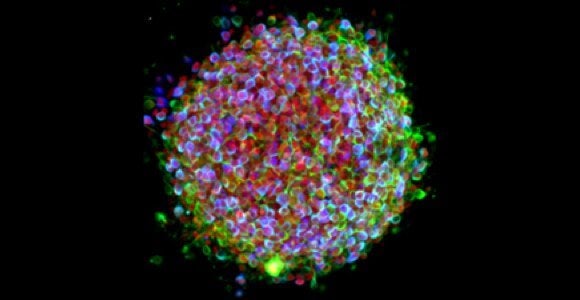European Project Aims To Create 1,500 New Stem Cell Lines

Share

Stem cells derived from patients with disorders, such as these Parkinson's cells, could foster drug screening to find treatments and also provide researchers a valuable tool to study disease.
Europe certainly believes in the promise of stem cells.
A joint public-private collaboration between the European Union and Europe’s pharmaceutical industry, called the StemBANCC project, will spend nearly 50 million euros to create 1,500 pluripotent stem cell lines. But the initiative’s goal isn’t to find a stem cell-based cure for diabetes or Alzheimer’s disease. They hope instead that their stem cell lines will prove to be faster and more effective drug screens in the search for drugs to fight these and other conditions.
A frustrating problem in medical research is the inadequacy of animal models. All too often a treatment works great in laboratory rats or mice but then its efficacy fails to repeat in human trials. But researchers are beginning to capitalize on the potential of stem cells – not as cures, but as means to finding cures.
Scientists are becoming more adept at turning skin cells into pluripotent stem cells, which can then be converted to other cell types such as neurons or heart cells. And because these are human cells they are superior to animal models for drug screening or toxicity testing. Human cell lines have been used for many years, but before pluripotent stem cells creating cell lines involved immortalizing the cells and thus drastically changing their physiology.
Be Part of the Future
Sign up to receive top stories about groundbreaking technologies and visionary thinkers from SingularityHub.


The goal of StemBANCC is to use these human-induced pluripotent stem cells as a drug discovery platform to treat the following 8 common diseases: Alzheimer’s disease, Parkinson’s disease, autism, schizophrenia, bipolar disorder, migraine, pain and diabetes. Studying these conditions typically involves creating an animal model, such as a rat that exhibits some behavioral hallmarks of autism after being given valproic acid. The cells from StemBANCC would improve upon animal models by providing, not only cells from humans but cells from patients with the actual disorders being studied. Skin cells gotten from a schizophrenia patient and converted (via pluripotency) to neurons, for instance, would give scientists a powerful tool with which to screen drugs.
Led by Oxford University, StemBANCC will involve 10 pharmaceutical companies and 23 academic institutions across 11 different countries. Part of the Innovative Medicines Initiative that pairs the European Union and the pharmaceutical industry. The EU is contributing 26 million euros ($33.5 million). Another 21 million euros ($27 million) are coming from the pharmaceutical industry. StemBANCC’s “kick-off” meeting took place in 2012 in Basel, Switzerland.
Zameel Cader, neurologist at the University of Oxford and a leader on the project, told Nature, “We’re specifically trying to develop a panel of lines across a range of diseases that are important to address. There isn’t another institution that’s doing this at the same scale across the same range of diseases.”
The hype surrounding stem cells typically extolls their virtues as a miraculous ‘cure all’ replacing damaged or diseased cells with new, healthy ones. And while stem cells have given blind people back part of their sight and have shown to restore some hearing in animals or even help paralyzed ones walk again in the lab, mainstream cures derived from stem cells are still rare. In the meantime, places like StemBANCC can pursue the less sexy, perhaps, but more reachable near term benefits of stem cells.
Peter Murray was born in Boston in 1973. He earned a PhD in neuroscience at the University of Maryland, Baltimore studying gene expression in the neocortex. Following his dissertation work he spent three years as a post-doctoral fellow at the same university studying brain mechanisms of pain and motor control. He completed a collection of short stories in 2010 and has been writing for Singularity Hub since March 2011.
Related Articles

This Week’s Awesome Tech Stories From Around the Web (Through December 20)

Data Centers in Space: Will 2027 Really Be the Year AI Goes to Orbit?

New Gene Drive Stops the Spread of Malaria—Without Killing Any Mosquitoes
What we’re reading